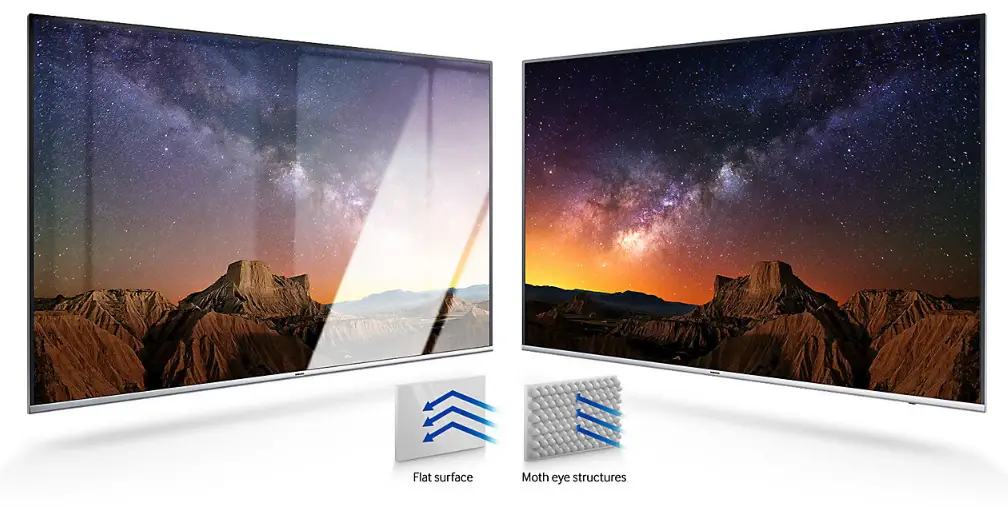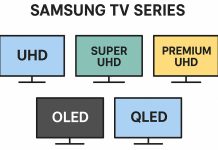Samsung announced this feature for its SUHD TVs in 2016 (and later for some QLED models) with the aim of minimizing screen glare in well-lit rooms, ensuring depth and clarity in dark scenes even when viewed in daylight or with the lights on. But in reality, Samsung did not develop any new technology, but simply used a marketing ploy to generate hype. The TVs were equipped with standard anti-glare displays that were developed several decades ago and have been used successfully ever since.
How it works
Samsung Ultra Black technology works as follows: a special coating with microscopic protrusions is applied to the screen surface. These protrusions are small but perform a very useful function, scattering and absorbing light falling on the screen from lamps or the sun, instead of reflecting it directly into the eyes. As a result, glare is virtually eliminated. This is a standard technology for creating anti-glare screens, which has remained unchanged for a very long time. Since light is not reflected from the screen, the TV is much more pleasant to watch in bright lighting conditions.

The future of Ultra Black technology
As practice shows, it is quite difficult to promote a technology that is essentially fictitious and used by virtually all TV manufacturers. And, as practice shows, after 2-3 years, the name itself becomes outdated and hackneyed, and prefixes such as “super,” “nano,” etc. appear. And considering that Samsung has completely withdrawn from the LED panel manufacturing business, the use of such a name has lost its meaning and is no longer used in TVs.






